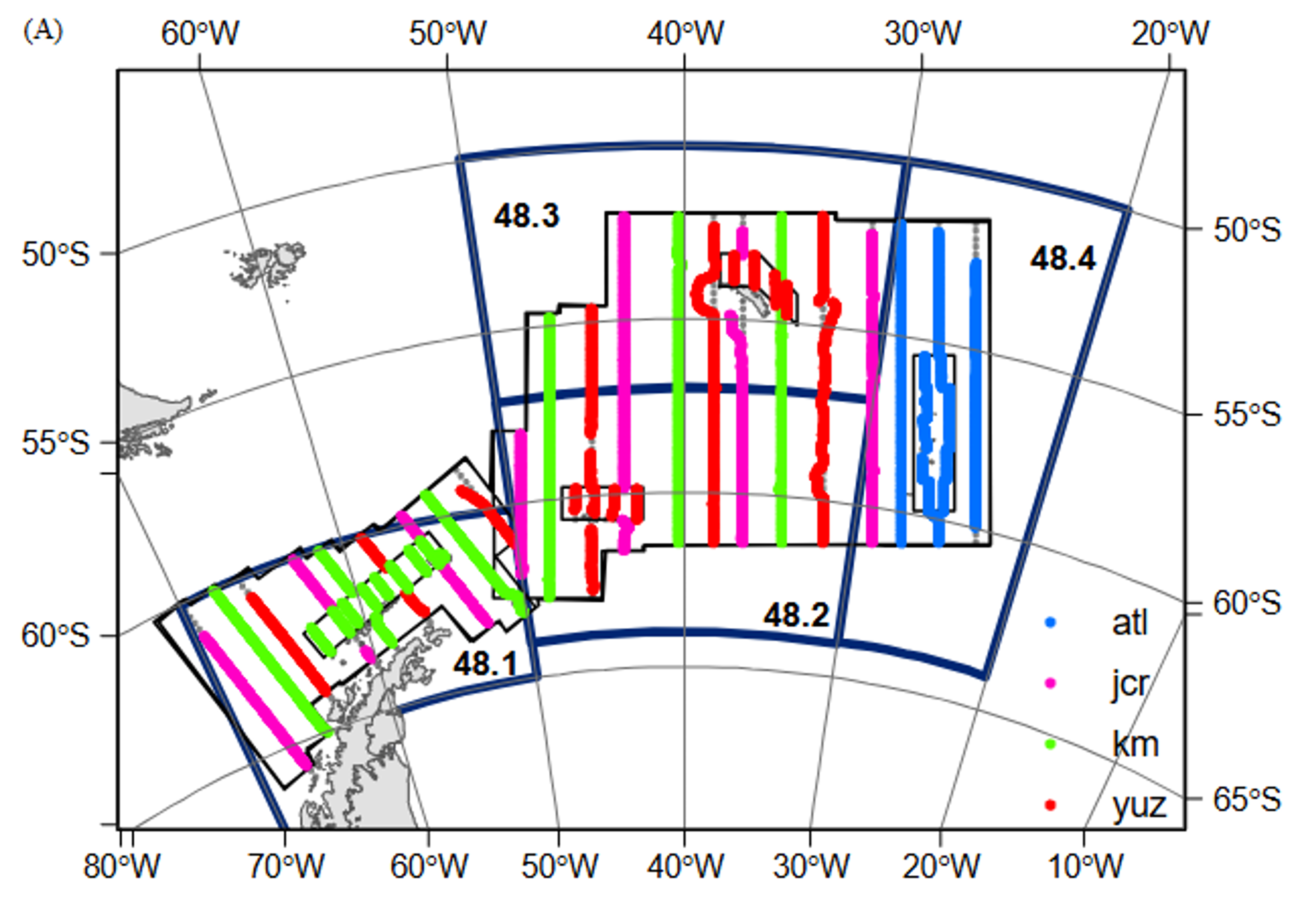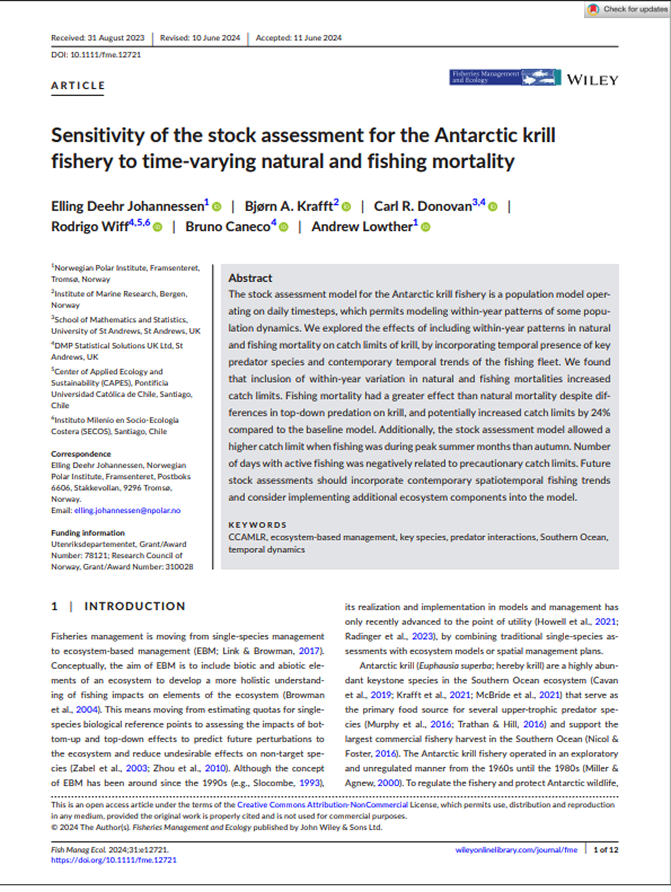Biomass
Fisheries management
Antarctic ecosystem
Krill (Euphausia superba)
The CCAMLR 2000 Survey: a multinational, multi-ship biological oceanography survey of the Atlantic sector of the Southern Ocean
Summary
The CCAMLR 2000 Survey marked the first major international krill research expedition since 1979/80, aimed at updating the 20-year-old population estimates that guide Antarctic krill fishing regulations. Research vessels from Japan, the UK, USA, and Russia collectively surveyed 17,424 kilometers of ocean transects throughout the Scotia Sea and Antarctic Peninsula waters over 32 days in early 2000. The expedition employed groundbreaking approaches including uniform acoustic equipment (Simrad EK500 echosounders), standardized measurement protocols, and daytime-only sound sampling to account for krill's daily vertical movement patterns. This coordinated effort delivered a comprehensive snapshot of the krill-centered marine ecosystem and reliable population estimates needed to establish precautionary fishing quotas under CCAMLR conservation management.

1
Map of the CCAMLR 2000 Survey. (A) Acoustic survey routes traveled by research vessels R.V. Atlantida (atl), R.R.S. James Clark Ross (jcr), R.V. Kaiyo Maru (km) and R.V. Yuzhmorgeologiya (yuz), with sampling zone boundaries shown as black lines and FAO management areas outlined in dark blue, (B).Key Findings
1
The first major krill survey in over 20 years, updating very old data from 1979/80 that was still being used to manage the krill fishery.2
The expedition covered 17,424 km of ocean routes across the Scotia Sea and Antarctic Peninsula area in just 32 days.3
Pioneering daytime-only acoustic sampling approach designed to account for krill's daily vertical movement patterns. 4
Uniform measurement protocols across all vessels using identical Simrad EK500 sonar equipment. 5
Surveyed the complete Scotia Sea and Antarctic Peninsula waters (FAO management Areas 48.1-48.4). 6
Generated updated population baseline estimate (B0) for krill fishery management decisions. 7
Comprehensive ecosystem data collection including ocean conditions, small marine animals, and predator species. 

